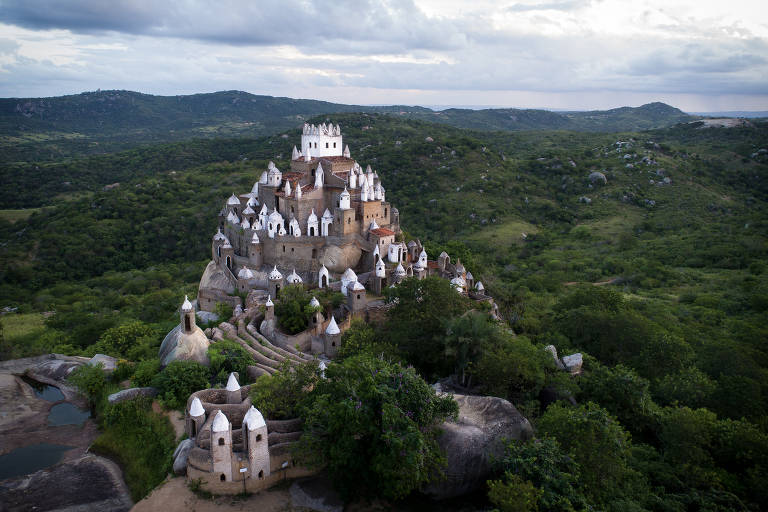A castle with traces of Islamic architecture has stood for 35 years in the middle of nowhere on top of a rock hidden in the Serra da Tapuia, a rugged area in Rio Grande do Norte.
The unfinished work, with 150 towers of varying sizes, 13 labyrinths, and four floors, is the life mission of retired army sergeant José Antônio Barreto, 87, also known as Zé dos Montes.
Its design was never drawn. There is no architectural plan, no engineering calculation, and no construction planning.
"It only exists inside his head. It came from the imagination. He always said he did not need drawing. You've never studied anything about it. He only wrote down how much cement and brick had cost him," said Joseildo Gomes de Oliveira Barreto, responsible for managing the site.
The building awakens the curiosity of those who see the towers piercing the sky, amid an incredible landscape and a silence interrupted only by the noise of the animal. Its history is mythical and magical.
It all began when Zé dos Montes was a child. He tells me that at the age of eight when he was collecting firewood in the middle of the bush in Rio Grande do Norte, he had a vision.
A woman appeared in front of him and told him that he had to build a chapel. Frightened, he ran home, but he did not tell his parents.
The place opened for visitation only seven years ago. "He did not do it here to be a tourist spot. He never liked that. He never had any incentive for anything," his son said.
Today you can pay R $ 10 to enter. There are no set hours. You dial in advance. The son runs a restaurant next door, which only works on the weekend.
The new plan will not, at the moment, lead to any change in the incentive rules in force in the Free Zone.
Translated by Kiratiana Freelon
